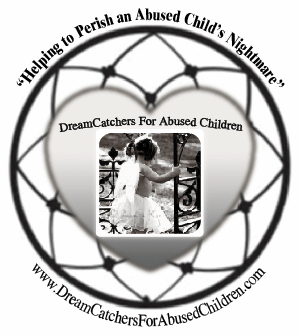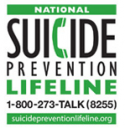7 STEPS TO PROTECTING YOUR CHILD FROM SEXUAL ABUSE…
STEP 1 LEARN THE FACTS….
It is highly likely that you know a child who has been or is being abused.
* Experts estimate that 1 in 4 girls and 1 in 6 boys are sexually
abused before their 18th birthdays. This means that in any classroom or
neighborhood full of children, there are children who are silently
bearing the burden of sexual abuse.
* 1 in 5 children are sexually solicited while on the Internet.
* Nearly 70% of all reported sexual assaults (including assaults on adults) occur to children ages 17 and under.
* The median age for reported sexual abuse is 9 years old.
Approximately 20% of the victims of sexual abuse are under age eight.
50% of all victims of forcible sodomy, sexual assault with an object, and forcible fondling are under age twelve.
Most child victims never report the abuse.
* Sexually abused children who keep it a secret or who “tell” and are
not believed are at greater risk than the general population for
psychological, emotional, social, and physical problems, often lasting
into adulthood.
It is also likely that you know an abuser. The
greatest risk to children doesn’t come from strangers but from friends
and family.
* 30-40% of children are abused by family members.
* As many as 60% are abused by people the family trusts- abusers
frequently try to form a trusting relationship with parents.
* Nearly 40% are abused by older or larger children.
* People who abuse children look and act just like every one else. In
fact, they often go out of their way to appear trustworthy to gain
access to children.
* Those who sexually abuse children are
drawn to settings where they can gain easy access to children, such as
sports leagues, faith centers, clubs, and schools.
Yet in more than 90% of sexual abuse cases the child and the child’s family know and trust the abuser.
Consequences
to children and to our society begin immediately. Child sexual abuse is
a direct source of a number of problems facing us.
Consequences to children and to our society begin immediately. Child
sexual abuse is a direct source of a number of problems facing us.
70-80% of sexual abuse survivors report excessive drug and alcohol use.
One study showed that among male survivors, 50% have suicidal thoughts and more than 20% attempt suicide.
Young girls who are sexually abused are more likely to develop eating disorders as adolescents.
* More than 60% of teen first pregnancies are preceded by experiences
of molestation, rape or attempted rape. The average age of the
offenders is 27 years old.
* Approximately 40% of sex offenders report sexual abuse as children.
* Both males and females who have been sexually abused are more likely to engage in prostitution.
* Approximately 70% of sexual offenders of children have between 1 and 9 victims; 20-25% have 10 to 40 victims.
* Serial child molesters may have as many as 400 victims in their lifetimes.
Step 2: MINIMIZE OPPORTUNITY…..
More than 80% of sexual abuse cases occur in one-adult/one-child situations.
Reduce the risk. Protect children.
* Understand that abusers often become friendly with potential victims
and their families, enjoying family activities, earning trust, and
gaining time alone with children.
Think carefully about the safety of any one-adult/one-child situations. Choose group situations when possible.
* Think carefully about the safety of situations in which older youth
have access to younger children. Make sure that multiple adults are
present who can supervise.
Set an example by personally avoiding one-adult/one-child situations with children other than your own.
Monitor children’s Internet use. Offenders use the Internet to lure children into physical contact.
Reduce the risk. Insist on policy.
* Create and lobby for policies reducing or eliminating
one-adult/one-child situations in all youth-serving organizations, such
as faith groups, sports teams, and school clubs. These policies should
ensure that all activities can be interrupted and observed.
* Talk with program administrators about the supervision of older youth who have responsibility for the care of children.
* Insist on screenings that include criminal background checks,
personal interviews, and professional recommendations for all adults
who serve children. Avoid programs that do not use ALL of these methods.
* Insist that youth-serving organizations train their staff and
volunteers to prevent, recognize, and react responsibly to child sexual
abuse.
Ensure that youth-serving organizations have policies for dealing with suspicious situations and reports of abuse.
One-on-one
time with a trusted adult is healthy and valuable for a child. It
builds self-esteem and deepens relationships. There are things you can
do to protect children when you want them to have time alone with
another adult.
Drop in unexpectedly when the child is alone with any adult, even trusted family members.
Make sure outings are observable, if not by you, then by others.
* Ask the adult about the specifics of the planned activities before
the child leaves your care. Notice the adult’s ability to be specific.
* Talk with the child when he or she returns. Notice the child’s mood
and whether the child can tell you with confidence how the time was
spent.
Find a way to tell the adults who care for children
that you and the child are educated about child sexual abuse. Be that
direct.
STEP 3 TALK ABOUT IT…..
Understand why children are afraid to “tell.”
* The abuser shames the child, points out that the child let it happen,
or tells the child that his or her parents will be angry.
* The abuser is often manipulative and may try to confuse the child about what is right and wrong.
* The abuser sometimes threatens the child or a family member.
Some children who do not initially disclose abuse are ashamed to tell when it happens again.
Children are afraid of disappointing their parents and disrupting the family.
* Some children are too young to understand.
Many abusers tell children the abuse is “okay” or a “game.”
Know how children communicate.
* Children who disclose sexual abuse often tell a trusted adult other
than a parent. For this reason, training for people who work with
children is especially important.
* Children may tell “parts” of what happened or pretend it happened to someone else to gauge adult reaction.
Children will often “shut down” and refuse to tell more if you respond emotionally or negatively.
Talk openly with your child.
Good
communication may decrease a child’s vulnerability to sexual abuse and
increase the likelihood that the child will tell you if abuse has
occurred.
Teach your children about their bodies, about
what abuse is, and, when age-appropriate, about sex. Teach them words
that help them discuss sex comfortably with you.
Model caring for your own body, and teach children how to care for theirs.
* Teach children that it is “against the rules” for adults to act in a
sexual way with them and use examples. Teach them what parts of their
bodies others should not touch.
* Be sure to mention that the abuser might be an adult friend, family member, or older youth.
* Teach children not to give out their email addresses, home addresses, or phone numbers while using the Internet.
* Start early and talk often. Use everyday opportunities to talk about sexual abuse.
* Be proactive. If a child seems uncomfortable, or resistant to being with a particular adult, ask why.
One survey showed that fewer than 30% of parents ever discussed sexual abuse with their children.
And even then, most failed to mention that the abuser might be an adult friend or family member.
Talk to other adults about child sexual abuse.
Support and mutual learning occur when you share with another adult.
You raise the consciousness of your community and influence their choices about child safety.
You may be offering support and information to an adult whose child is experiencing abuse, and may not know what to do.
You put potential abusers on notice that you are paying attention.
STEP 4 STAY ALERT…..
Learn the signs.
* Physical signs of sexual abuse are not common, although redness,
rashes or swelling in the genital area, urinary tract infections, or
other such symptoms should be carefully investigated. Also, physical
problems associated with anxiety, such as chronic stomach pain or
headaches, may occur.
Emotional or behavioral signals are more
common. These can run from “too perfect” behavior, to withdrawal and
depression, to unexplained anger and rebellion.
Sexual behavior and language that are not age-appropriate can be a red flag.
Be aware that in some children there are no signs whatsoever.
If
you find physical signs that you suspect are sexual abuse, have the
child physically examined immediately by a professional who specializes
in child sexual abuse.
STEP 5 MAKE A PLAN…..
Don’t overreact.
If
a child breaks an arm or runs a high fever, you know to stay calm and
where to seek help because you’ve mentally prepared yourself. Reacting
to child sexual abuse is the same. Your reactions have a powerful
influence on vulnerable children.
When you react to disclosure with anger or disbelief, the response is often:
The child shuts down.
The child changes his or her story in the face of your anger and disbelief, when, in fact, abuse is actually occurring.
* The child changes the account around your questions so future
tellings appear to be “coached.” This can be very harmful if the case
goes to court.
The child feels even guiltier.
Very few reported incidents are false.
Offer support.
Think through your response before you suspect abuse. You’ll be able to respond in a more supportive manner.
believe the child and make sure the child knows it.
Thank the child for telling you and praise the child’s courage.
* Encourage the child to talk but don’t ask leading questions about
details. Asking about details can alter the child’s memory of events.
If you must ask questions to keep the child talking, ask open-ended
ones like “what happened next?”
Seek the help of a
professional who is trained to interview the child about sexual abuse.
Professional guidance could be critical to the child’s healing and to
any criminal prosecution.
Assure the child that it’s your responsibility to protect him or her and that you’ll do all you can.
Report or take action in all cases of suspected abuse, both inside and outside the immediate family.
Don’t panic. Sexually abused children who receive support and psychological help can and do heal.
Child sexual abuse is a crime.
Know the legal requirements for reporting:
* All 50 states require that professionals who work with children
report reasonable suspicions of child abuse. Some states require that
anyone with suspicions report it. Information about each state’s
requirements is available at the Child Welfare Information Gateway
www.childwelfare.gov.
If you are a professional who works with
children, (e.g., a teacher, a nurse) there are special procedures and
reporting requirements you must follow. Your employer should provide
mandated reporting training.
Know the agencies that handle reports of abuse. Two agencies handle most reports of child abuse.
Child Protective Services
in some states this agency has a different name
Law Enforcement
Some
states designate Child Protective Services as the agency that accepts
reports of suspected child abuse. Others designate law enforcement.
Some do not designate or designate both. Many states have toll-free
lines that accept reports of abuse from the entire state. To find out
where to make a report in your state, identify the Child Abuse
Reporting Numbers at The Child Welfare Information Gateway website,
www.childwelfare.gov.
If the legal system does not provide
adequate protection for a child, visit the National Center for Victims
of Crime at www.ncvc.org or call 1-800-FYI-CALL for referral
information.
STEP 6 ACT ON SUSPICIONS…..
By acting on suspicions of child sexual abuse, you will save not only one child, but perhaps countless others.
Many of those who sexually abuse children have multiple victims.
You
may be faced with a situation where you suspect abuse but don’t have
any proof. Suspicions are scary, but trust your instincts. Have the
courage to report the suspected abuse.
What if I’m not sure? Where do I go?
Child Abuse Helplines have staff specifically trained to deal with
questions about suspected child sexual abuse. Call Darkness to Light’s
helpline, 1-866-FOR-LIGHT to be routed to resources in your community,
or call the Childhelp USA National Child Abuse Hotline, 1-800-4-A-CHILD.
Children’s Advocacy Centers coordinate all the professionals (legal,
social services, medical) involved in a case. If you’re unsure about
whether to make an official report or just need support, contact a
children’s advocacy center. The staff will help you evaluate your
suspicions and your next steps.
To find a center near you, contact The National Children’s Alliance at www.nca-online.org or 1-800-239-9950.
Local Community Agencies, such as local hotlines, United Way offices, or rape crisis centers can often help.
Talk to the child’s parents (as long as they are not the abusers) and
provide educational materials, such as this booklet. If the parents
seem indifferent or unlikely to take action, call one of the
recommended sources.
These resources can help you if you are
unsure of whether abuse has occurred, but they do not substitute for
making an official report. Remember that you may be a mandated reporter
in your state and you may be the only source of protection for that
child.
STEP 7 GET INVOLVED…..
Get involved by donating your time and resources to support organizations such as these:
Prevention programs
Children’s advocacy centers
Crisis information and referral services
Rape crisis centers
Use your voice and your vote to make your community a safer place for children.
* Ask that schools and organizations in your community have child
sexual abuse prevention policies, and help with their creation. Ask
other adults to do the same.
Bring Darkness to Light’s Stewards of Children prevention program to your community. www.darkness2light.org.
Support legislation that protects children. Visit www.darkness2light.org for legislative information.
Demand that the government put more resources into protecting
children from sexual abuse and into responding to reports of sexual
abuse.
Call and write your members of Congress.
Write letters to your newspaper.
BREAK THE CYCLE OF SILENCE.
If
child sexual abuse is part of your history, do not keep silent. By
breaking the cycle of silence, you will break free from the trauma you
carry within you and begin an important healing process. And you will
help protect other children from suffering the way you did.
There are 39 million survivors of child sexual abuse in America today.
Let the healing and the prevention begin today.
By the time you finish reading this, 15 children will have been abused; In the next five minutes, 30 more; Within the next hour, 360 more; And by tonight, close to 8,000+ children will have suffered from abuse, 5 of which will die. Child abuse has increased 134% since 1980 and is now considered a worldwide epidemic. The high jump in child abuse deaths and the shocking increase in statistics highlights the frightening lack of public knowledge.
Educate Yourself -- Learn the Facts
It May Just Save a Child's Life!!


















![Validate my RSS feed [Valid RSS]](http://dreamcatchersforabusedchildren.com/wp-content/uploads/2009/10/valid-rss.png)












